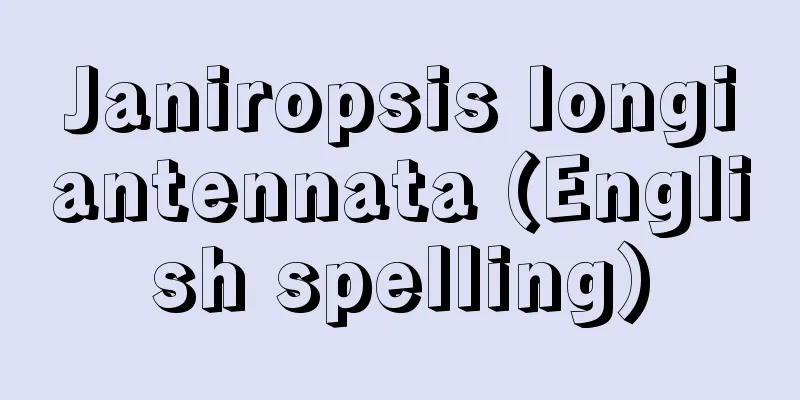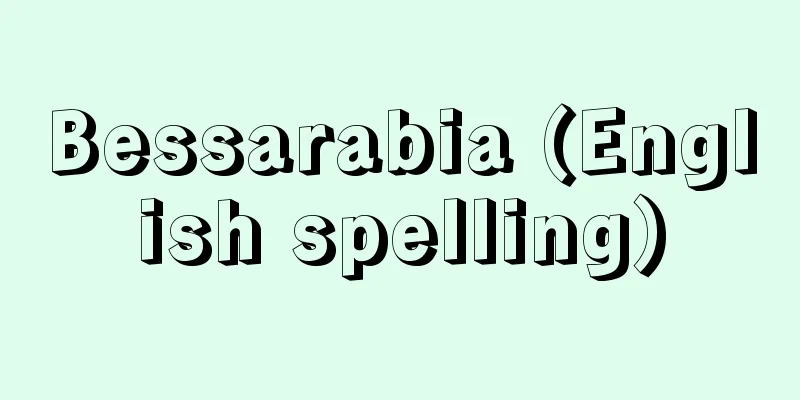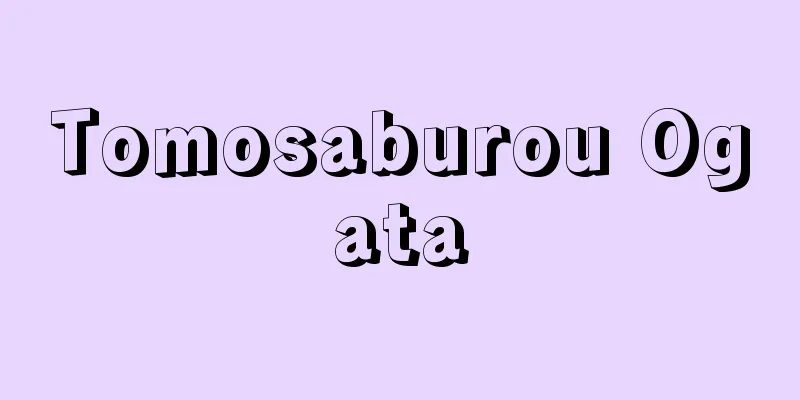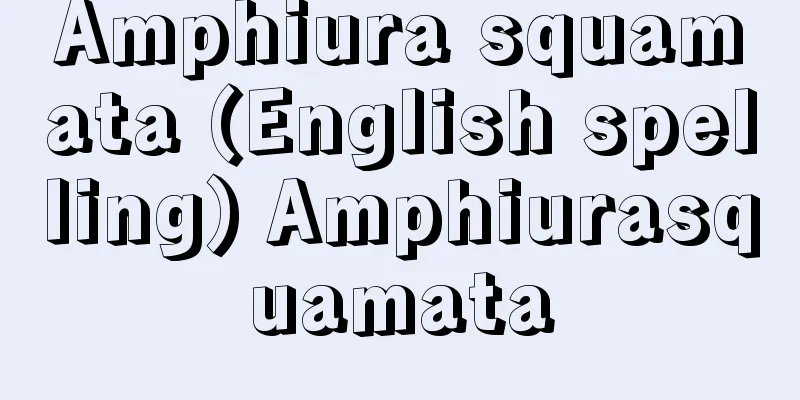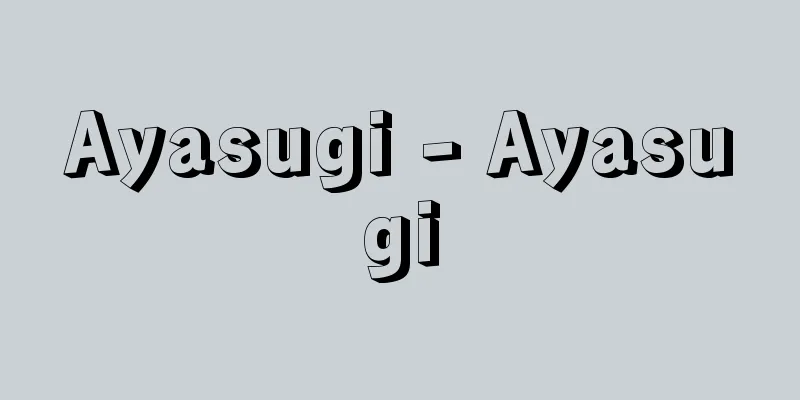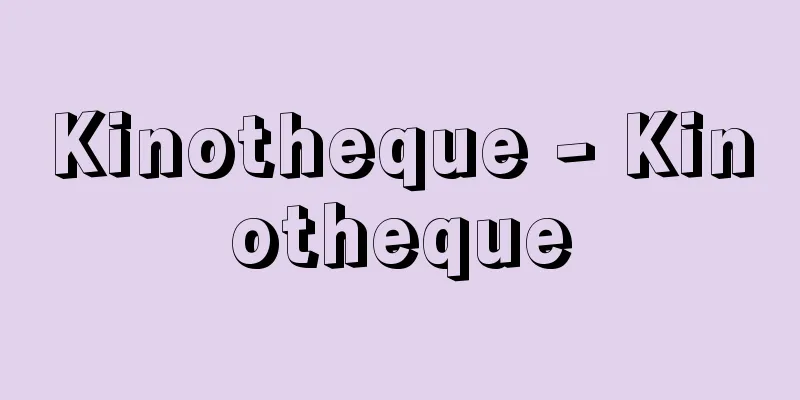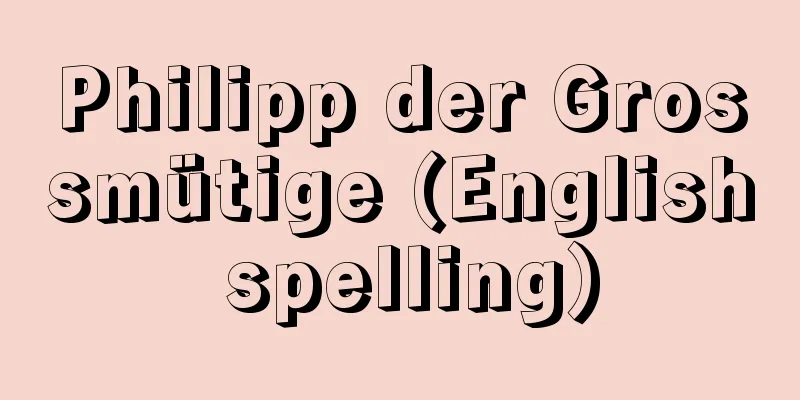Property insurance - Songaihoken

|
A classification name for insurance types such as fire insurance, automobile insurance, personal injury insurance, liability insurance, marine insurance, and transportation insurance. The names of non-life insurance companies always include the term "marine insurance" or "fire insurance." The Insurance Business Act and the Enforcement Regulations of the Insurance Business Act also stipulate that one or more of the following must be used in the company name: "personal accident insurance," "automobile insurance," "reinsurance" (an insurance system between insurance companies to spread the risk they have assumed), and "non-life insurance." The insurance included in non-life insurance has the characteristic of compensating for the economic (mainly monetary) burden caused by damages caused by accidents or disasters. To explain non-life insurance in more detail, it is insurance that compensates for the actual amount of loss when the insured subject (also called the object) is damaged by an accident or disaster that is predicted to occur within a certain period of time, with the insured value (current market value) of the insured subject as the maximum limit, based on the ratio of the insured value immediately before the accident to the contract amount (what percentage of the current market value is insured). Therefore, non-life insurance has the unique function of restoring the state to its original state or providing compensation. This is why the word "compensation" is used in the case of non-life insurance. Incidentally, the word "security" is used in the case of life insurance. From a legal standpoint, "insurable interests" are considered an essential requirement for non-life insurance (contract). "Insurable interests" refer to the relationship of interest between the insured and the subject of the insurance. In other words, the insured receives daily benefits from owning a certain asset, and if that asset is damaged by an accident or disaster, the insured will no longer be able to live or work as before. Since non-life insurance compensates for that damage, "insurable interests" are considered a requirement for the establishment of non-life insurance (contract). The most commonly used classification method for insurance is into non-life insurance and life insurance. This classification method is modeled after the German classification method, and is also adopted in the Insurance Business Act, which stipulates that the government supervises the insurance business as a licensed business. However, this classification method has long been considered unscientific. This is because non-life insurance is a general name for types of insurance that compensate for actual losses when losses occur due to accidents or disasters, while life insurance is a classification name based on the subject of insurance (human life) and is a general name for types of insurance that pay a fixed amount of insurance money (the insurance contract amount applied for at the time of contract) on conditions such as death during the contract period or survival until maturity, and the classification standards for the two types are not unified. Since the 1980s, there has been an increase in types of insurance (called third-sector insurance) that combine characteristics of both non-life insurance and life insurance but cannot be classified as either, such as medical insurance and nursing care insurance. As this has become an important market for both non-life insurance companies and life insurance companies, the government revised the Insurance Business Act in 1995 to allow third-sector insurance to be handled by both non-life insurance and life insurance business licenses. However, non-life insurance companies were required to handle third-sector insurance using the actual loss compensation method (compensation for actual losses incurred, expenses incurred, etc.), while life insurance companies were required to handle third-sector insurance using the flat-rate payment method. In addition to non-life insurance businesses run by private companies, there is also non-life insurance as a national or government policy insurance. For example, there is trade insurance that compensates for risks related to foreign trade and other external transactions based on the Trade Insurance Law, fishing boat insurance based on the Fishing Boat Damage Compensation Law, and agricultural insurance that compensates for agricultural disasters underwritten by agricultural mutual aid associations and the like based on the Agricultural Insurance Law. There is also non-life mutual aid as a mutual aid business run by agricultural cooperatives and consumer cooperatives, using insurance techniques to ensure the livelihood security of their members. The Insurance Business Act grants business licenses only to joint-stock insurance companies and mutual insurance companies, excluding associations, but mutual aid businesses are in reality insurance businesses run by cooperatives. Mutual aid associations handle property and life insurance, such as fire insurance, automobile insurance, personal injury insurance, and liability insurance. Many mutual aid associations also handle automobile liability insurance, which is mandatory for car owners. Today, mutual aid businesses have become so widespread that they rival the insurance business, and they provide livelihood security for many people in their local communities and workplaces. Non-life insurance companies operate under a government licensing and supervision system, providing compensation for various risks that make it difficult to continue economic activity and social life, and thus playing an important role in society. However, many non-life insurance companies received administrative sanctions such as business suspension orders and business improvement orders after a large number of cases of non-payment of insurance claims and over-collection of insurance premiums were discovered between 2005 and 2008. It is believed that the nature of management that was absent of the insurance policyholder (consumer), which was widespread under the protection of the convoy administration of the Ministry of Finance, the former supervisory agency, and in the absence of price and product development competition, was not sufficiently improved. The question is whether non-life insurance companies can truly regain the trust of consumers. [Naoshi Oshio March 19, 2018] [Reference items] | | | | | | | | | | | | | | | | | |Source: Shogakukan Encyclopedia Nipponica About Encyclopedia Nipponica Information | Legend |
|
火災保険、自動車保険、傷害保険、賠償責任保険、海上保険、運送保険などの保険種類を総称する保険の分類上の名称。 損害保険会社の社名には、かならず「海上保険」や「火災保険」などの名称が含まれている。保険業法および保険業法施行規則では、そのほかに「傷害保険」「自動車保険」「再保険」(引き受けた危険を分散するための保険会社間の保険制度)および「損害保険」のうちの一つ以上を社名に使用することを定めている。 損害保険に含まれる保険は、偶然の事故や災害で発生した損害による経済的(おもに金銭的)負担を補償する特徴をもっている。損害保険をさらに詳しく説明すると、保険の対象(目的ともいう)の保険価額(時価評価額)を最高限度額として、一定期間内に発生することが予測される偶然の事故や災害によって保険の対象が損傷した場合、事故直前の保険価額と契約金額との割合(時価評価額に対してどれくらいの割合を保険につけたか)をもとに実損額を補償する保険である。したがって、損害保険は原状回復ないし補償という固有の機能をもっているのである。損害保険の場合、「補償」という文字を用いるのはそのためである。ちなみに生命保険の場合には「保障」を用いる。 法律論の立場では「被保険利益」を損害保険(契約)の不可欠の要件と考える。「被保険利益」とは、被保険者と保険の対象との利害関係をさす。つまり、被保険者はある財を所有していることで日常的に利益を受けており、それが偶然の事故や災害で損害を被った場合に、いままでどおりの生活や仕事ができなくなる。そこで、その損害を補償するのが損害保険であるから、「被保険利益」は損害保険(契約)成立の要件とされるのである。 保険を分類するときに一般的に使用されるのが損害保険と生命保険という分類方法である。これはドイツの分類方法に倣ったもので、政府が保険事業を免許事業として監督することを定めた保険業法でも採用されている。しかし、この分類方法は古くから非科学的であるといわれている。それは、損害保険が偶然の事故や災害によって損害が生じた場合に実損額を補償する保険種類を総称する名称であるのに対し、生命保険は保険の対象(人の生命)を基準にした分類名称で、契約期間中の死亡や満期までの生存などを条件に定額の保険金(契約時に申し込んだ保険契約金額)を支払う保険種類を総称する名称であり、両者の分類基準が統一されていないからである。 1980年代以降、損害保険と生命保険のいずれにも分類することができない両者の特徴をあわせもった医療保険や介護保険などの保険種類(第三分野保険という)も増えてきた。損害保険会社にとっても生命保険会社にとっても重要な市場となってきたため、政府は1995年(平成7)に保険業法を改正し、第三分野保険の取扱いを損害保険事業免許でも生命保険事業免許でも認めた。ただし、損害保険会社は実損填補(てんぽ)方式(実際に発生した損害額、負担した費用等の補償)で、また生命保険会社は定額払い方式でそれぞれ取り扱うこととされた。 民間会社による損害保険事業とは別に、国家・政府の政策保険としての損害保険もある。たとえば貿易保険法に基づき外国貿易その他の対外取引にかかわる危険を補償する貿易保険、漁船損害等補償法に基づく漁船保険、農業保険法に基づき農業共済組合等が引き受ける農業災害等に対する補償を行う農業保険などである。また、農業協同組合や消費生活協同組合などが組合員の生活保障を実現するために保険技術を使い、運営する共済事業として、損害共済がある。 保険業法では、保険株式会社と保険相互会社だけに事業免許を与え、組合組織を除外しているが、共済事業は実質的には協同組合による保険事業である。共済組合では火災共済、自動車共済、傷害共済、賠償責任共済などの損害共済や生命共済を扱っている。自動車の所有者に加入が義務づけられている自動車損害賠償責任共済を扱っている共済組合も多い。今日では共済事業は保険事業に匹敵するほど広く普及し、地域や職域で多くの人々の生活保障機能を担っている。 損害保険会社は政府の免許・監督制度の下で事業運営を行い、経済活動や社会生活の継続を困難にするようなさまざまな危険(リスク)に対する補償を提供しており、社会的に重要な役割を果たしている。しかし、2005年(平成17)から2008年にかけて大量に発覚した保険金不払いや保険料の過徴収問題では、多くの損害保険会社が業務停止命令や業務改善命令などの行政処分を受けた。かつての監督官庁であった大蔵省の護送船団行政に守られ、価格・商品開発競争が排除されたなかで蔓延(まんえん)していた保険契約者(消費者)不在経営の体質が十分に改善されていなかったのではないかと考えられる。損害保険会社が真に消費者の信頼を取り戻すことができるかどうかが問われている。 [押尾直志 2018年3月19日] [参照項目] | | | | | | | | | | | | | | | | | |出典 小学館 日本大百科全書(ニッポニカ)日本大百科全書(ニッポニカ)について 情報 | 凡例 |
>>: Compensation for damages - Songaibaisho
Recommend
Christie, SH (English spelling) ChristieSH
…In the study of telegraphy, together with Willia...
Society of Telegraph Engineers
…He was born in Bombay, India, and studied in var...
Shincho - Shincho
A monthly literary magazine. First published in M...
Vladimir Nabokov
A Russian-born American novelist and poet. Born i...
Rhodiola rosea - Iwabenkei
A perennial plant of the Crassulaceae family (APG...
Ames, A.
...Therefore, the discovery of galaxies in the ea...
American Cocker Spaniel
A medium-sized dog native to the United States. It...
Integrated farming management - Fukugo nougyoukeiei
Agricultural management in which two or more busin...
Parthenium argentatum (English spelling) Parthenium argentatum
… Guayule rubber has been attracting attention re...
Agent Wholesalers (English)
… Wholesalers whose main business is wholesale ar...
tuber
...Gladiolus, crocus, freesia, babiana, etc. (3)T...
Cutout Shadow Art - Cutout Shadow Art
…It is a game in which figures resembling people,...
Pentagram
…The Philippine name for some trees and their woo...
Catchline - Catchiline
...An introductory phrase or short sentence used ...
Stalin (English spelling) Iosif Vissarionovich Stalin
Dzhugashvili, born on December 21, was the son of...
